Rosol Malina is an amazing plant, which is often found in garden sites. This is an unmeasised view of raspberries, which belongs to the stemp. The most interesting thing is that often this variety is called Tibetan, since it is this region that is the birthplace of the rosy raspberry.
If we talk about why many gardeners make a choice in favor of this raspberry, then often we are talking about a decorative effect. The leaves and the fruits themselves are practically guaranteed to decorate the site, due to which no additional actions for the transformation of the territory do not have to do, especially if the landing of this raspberry is massive.
To date, the rivorette raspberry is often found in the Baltic countries. It is from there that this plant and twisted in the CIS countries.
An important feature of the raspberry is the appearance of the fruit themselves. They resemble something strawberries, but on classical raspberry, which is available everywhere on sale, it seems more. Moreover, many people frankly adore the smell of a spawn raspberry, as he clearly reminds strawberries. If we talk about taste, then there is almost complete similarity with ordinary raspberries.
In this article we will talk about landing and caring for the welfare raspberry. We will also analyze some aspects of cultivation of this culture.
Features of rolled raspberry
This raspberry variety is a semi-staple, whose height of the shoots ranges from 60 cm to 1.5 m. It is obvious that the peculiarities of the growth depend on the specificity of the plant's care. The leaves in the plant have a light green shade, hafried. It is the leaves of raspberries that make the most attention, even despite enough unusual fruits.
Blooming with white flowers in the plant is long. The flowers themselves in diameter can be up to 4 cm. The beginning of flowering occurs in June and ends at about the end of the autumn. Interestingly, the flowers are regularly blown together with constructive berries.
Fruits themselves have a bright burgundy shade. The size of the berries is more than impressive - up to 3 cm in diameter. Fruits are directed up and do not hide under the leaflets of the shrub. You can notice such a shrub from afar, as the berries are really large and bright, on the background of green plants, it immediately stands out.
Even if there are no raspberry lovers in the family, the shrub will be more than a successful decorative object.
Often, the hosts make a decision to produce a massive landing of such shrubs, and they are located along the fence, which creates a symbiosis of the fence and shrub of the raspberry. It looks impressive, especially since such a decision adds a plot of some kind of naturalness, which many owners want to reach.
Disadvantages of wetting raspberry
Unfortunately, there are raspberries and substantial disadvantages to this variety of raspberries and substantial disadvantages.
- Not the most pleasant taste of berries. Many may assume that large raspberry fruits should be simply an incredible taste, however, in the case of a warehouse, only a neutral taste that has too little common with classical raspberries can be noted. Accordingly, for lovers of these berries, this variety will be of something far from the most delicious. However, perhaps someone bribed the large size of the fruit.
- Shrub with spines. From the name of the variety it can be understood that with roses bushes there is something in common. We are talking about spikes present throughout the shrub. Indeed, collecting a crop will not be easy, considering that the barns are a lot here, and they are located next to the fruits. On the other hand, if the shrub was planted for a natural fence, then the best option can not come up with. If you need to collect berries, you will have to put on gloves.
Landing of rosophone raspberry
First of all, it is worth knowing that the landing place should be open. It is best to choose a fertile plot that is under sunshine.
- Before boarding, it should be borne in mind that the rapid development of raspberries occurs in terms of the root sprouted. Accordingly, the landing site should be independent of other plants, since suddenly growing a number of culture can be in the center of the problem. If it is not far growing for the owners of the plant, the slate or metal sheets, which make it impossible to spread the roots on a large area around the landing site of the raspberry. By the way, the ruined shrubs themselves are not affected.
- An ideal place to disemboditate -vokrug fence, as it should not harm plants on the plot, and it will be quite attractive to look. Some gardeners come differently, using small barrels for landing. Accordingly, these very barrels need to be immersed in the soil, after which it is planted. The roots will not spread around, and the shrub himself will feel comfortable.
- The raspberry cutlets simply stick into a shallow pit (up to 50 cm). After that, the volume watering is performed.
- Experts note that the most important when planting a warehouse raspberry is a matter of growing. If the development of the shrub will begin, then bring the roots will be very difficult, considering colossal in terms of volume.
- The first harvest of raspberries can be obtained after 3-4 years after landing. Much depends on the existing site. Perhaps the soil is not too fertile, and maybe the climate does not have a very positive effect on the development of the plant.
Specificity of the care of the Russian Malina
- The main task associated with the departure of the data of the raspberry is a weeding, as well as in the fine bursting of the soil. Also, irresponsible should be carried out regularly, since shrubs adore water, and in large quantities. All this is more than relevant information during dry periods, when some plants simply die from lack of moisture.
- To ensure the absence of drying the upper layer of the soil, you need to mulch the soil. This is especially important if the plant is young, it is whether it needs an active growth and a kind of energy charge.
- This raspberry variety is distinguished by rapid growing, blossoming and fruiting culture begins on those shoots that have grown in the current year. Harvesting should be carried out not immediately from all shrub, but gradually - as fruits ripening.
Use of the crop of the rosy
Many owners expect a harvest, since the berries of this raspberry do not cause any allergies. This is significant advantage, given the fact that classical raspberries are not suitable for everyone. Of course, the taste is a little not the fact that many are expected, but at the same time a taste that has loved here.
In the summer and autumn period, rollerous raspberries can become an excellent tool against thirst. Esieving just a few berries, can completely talk to drink, and this is especially true during hikes and walks, when there are no large water reserves at hand.
As for the conservation, many gardeners are happy to make jam from this raspberry. The most interesting thing is that a somewhat simplified taste of the warehouse has a positive effect on the taste of jam. It acquires a strawberry aroma and a delicate taste. If you add a little currant to the spore raspberry, then the jam will be amazing at all.
Diseases and pests of wares
As the experience of many gardeners, diseases and pests in rollerous raspberries are the same as the classic.
- Puffy dew. This is a truly dangerous fungal disease that manifests itself in white on the leaves of the plant. Of course, gradually the culture begins to fade, despite the phenomenal vitality, therefore it makes sense to immediately respond to such a tendency. After harvesting, it is necessary to treat the plant with a special solution against fungal diseases.
- Aphid. This pest is more than widespread among many plants. The main disadvantage is that the colonies of TLI can settle right in shoots, and if the situation is too aggravated, it will not work out to cope with this pest. However, if you notice a TRU in time, you can try to treat the plant with a carbofos or accomplish.
- Cute tick. This pest is engaged in eating fruits and leaves, and it should be reacted in time to the situation so that the tick does not use the entire harvest in food. The first "bell" appearance of a spider tick on a shrub is the formation of a web. Again, there is a treatment with special solutions that are enough in garden stores.
- Malnic beetle. It becomes clear from the name that this pest is a threat for various varieties and types of raspberries. This is a small insect, up to 4 mm long, which settles in the boots of the plant and eats them. It's not so difficult to cope with Malinous Beetle - it is enough to rub the shrub during the bootonization period. You need to destroy zhukov to land.


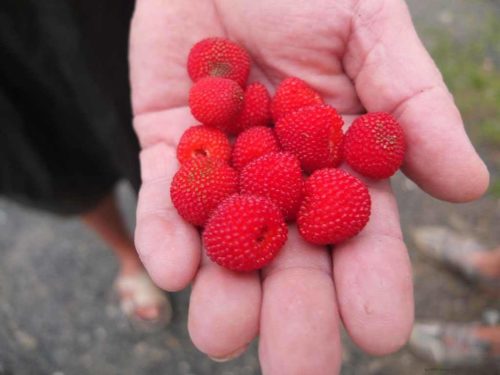
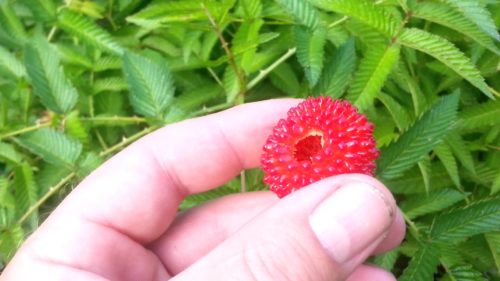
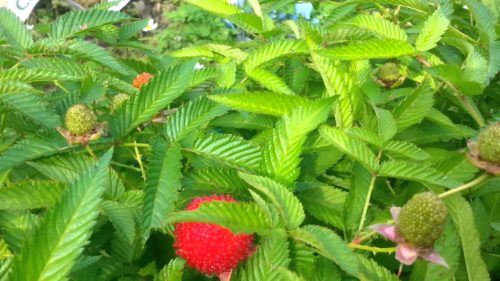
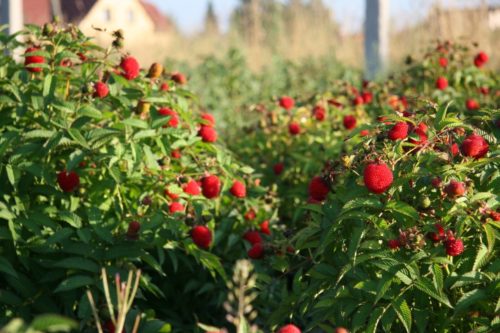
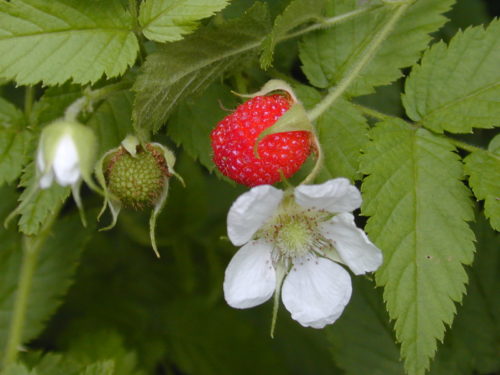
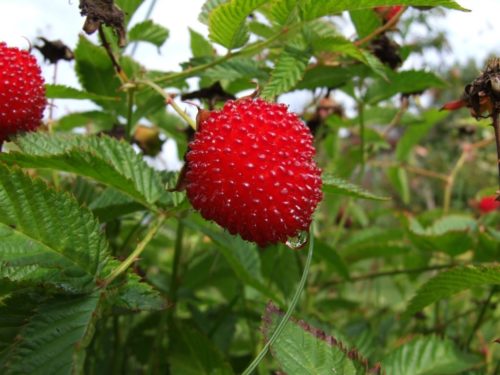












 Start a discussion ...
Start a discussion ...